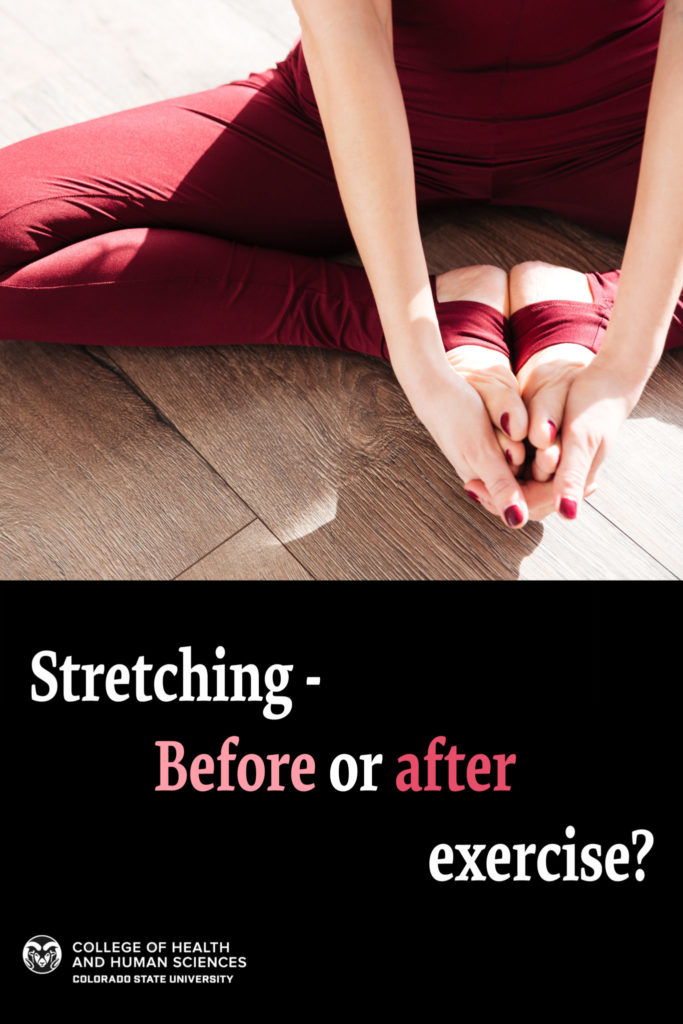 Flexibility training, or stretching, is an important part of any exercise program. Along with our aerobic exercise for our heart health, and resistance training for muscle endurance and strength, we want to be adding in regular flexibility training.
Flexibility training, or stretching, is an important part of any exercise program. Along with our aerobic exercise for our heart health, and resistance training for muscle endurance and strength, we want to be adding in regular flexibility training.
Like any other activity, it does not have to be every day and variety in our types of stretching can be helpful. There is strategy to the order of our workout session. A workout itself should always include a warm-up, conditioning segment, and a cool down. During that conditioning segment, we could have a singular focus like 30 minutes of cardio, or if time and interest allows, we could do aerobic and resistance training. Depending on our long-term goals, the order of those conditioning segments matters.
When adding both cardio and resistance on the same day, if we have more aerobic goals, we might do aerobic exercise first, and if strength goals, we might do strength exercise first. In the same manner, the timing of our flexibility training in our workout is important too. It is generally recommended to complete this type of training after the body is already warm. So, we should be doing it as the cool down or to end of our workout. If our major goal for the day is flexibility training, we should still be doing an active warm-up.
There is a time and a place for everything, so let’s compare stretching that we might do pre-workout versus post-workout.
Pre-workout stretching
Stretching might not feel like it is doing much in the moment, however, using this form of training for our warm-up can help to decrease risk of injury. Using stretching before the major portion of your workout can help to enhance your range of motion, making it easier to perform some movements. It is okay to have stretching both at the beginning and end of your work, as each time will serve a different purpose. It is recommended that your form of stretching before the workout be more dynamic in nature. This means still having the opportunity to warm up the body and by doing active movements to work your muscles through a range of motion, rather than holding in a static stretch like we might do post-workout. Dynamic stretches increase muscle temperature and decrease stiffness. These types of movements can help to boost speed, agility, and acceleration in our workouts. Dynamic stretches include activities like high knees, leg swings, arm circles, butt kicks, and more.
Post-workout stretching
Stretching as a part of your cool down, or the very last segment of your workout, can be helpful for those long-term goals of enhancing range of motion and can help to decrease muscle soreness related to your workout. Static stretches are held singularly for a length of time, compared to dynamic stretches that are repetitive movements. The length of time can vary, but static stretches are often held in the duration of 10 – 60 seconds. Once in the position of the stretch, there will not be any active movement through the range of motion, but rather terminating around the joint at the range of motion that allows for the feeling of slight tightness to the muscle. The timing and purpose of these stretches at the end of a workout help to slowly regulate the body back it’s pre-workout state. It helps to relax our muscles and allows for heart rate and respiration to come back down. You do not have to hit every muscle of the body in one session, but can aim to hit different muscle groups different days after workout to have a balance overall. Static stretches include quadriceps stretch, posterior shoulder stretch, triceps stretch, cobra, hamstring stretch, and more.
Kimberly Burke is a lecturer in the Department of Health and Exercise Science and the director of the Adult Fitness Program at Colorado State University. Adult Fitness offers exercise opportunities for employees of CSU as well as community members while providing hands-on learning experiences for health promotion students. To learn more, see the Adult Fitness Program website